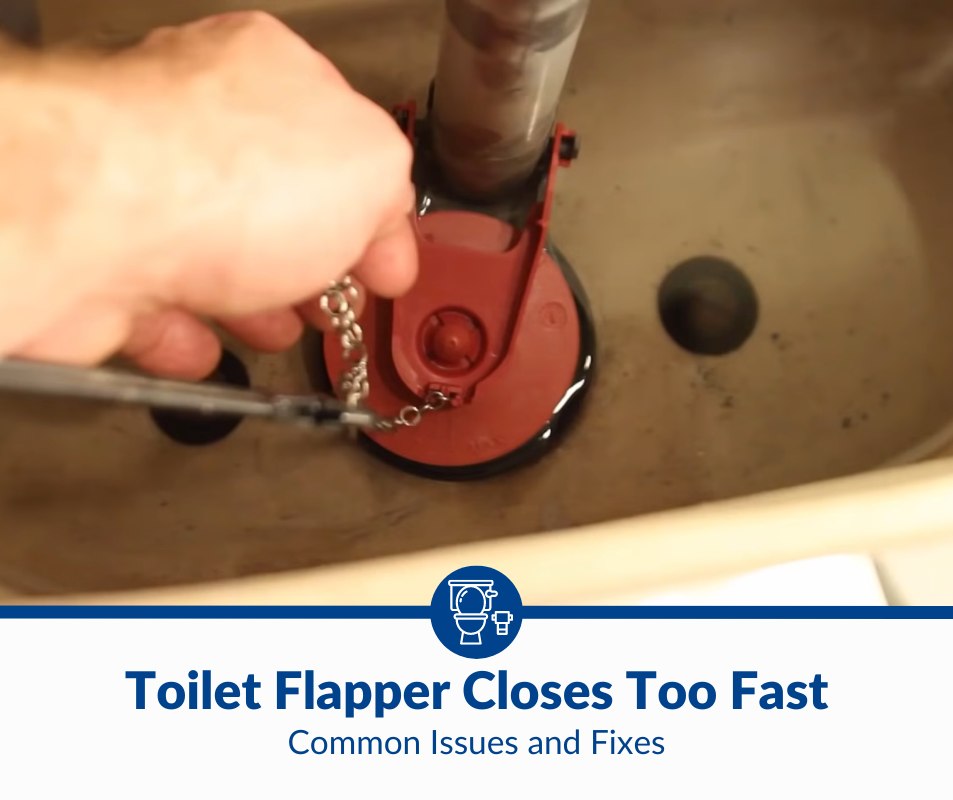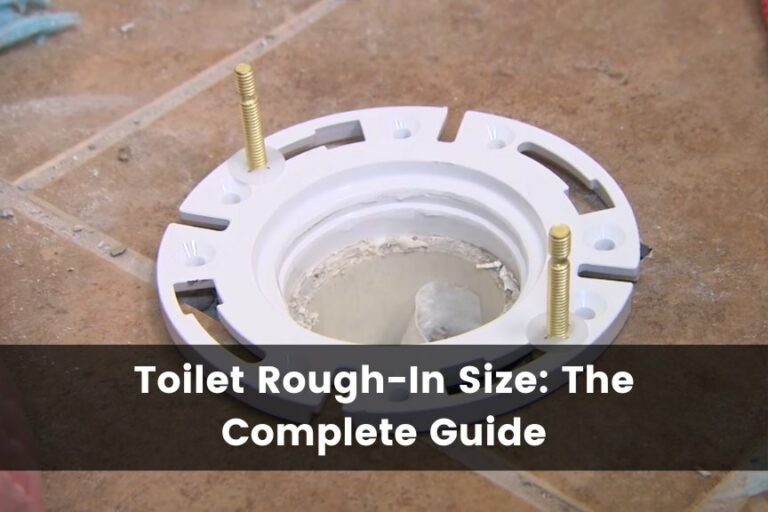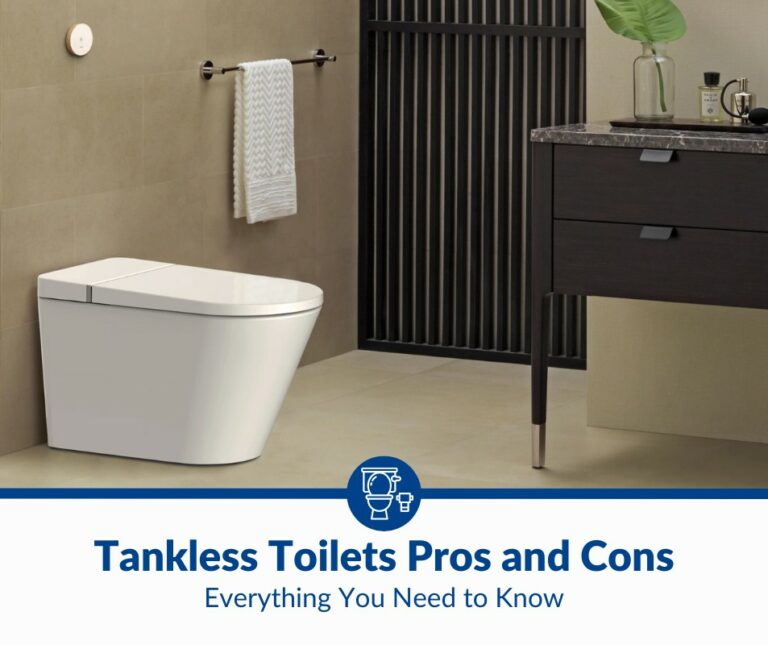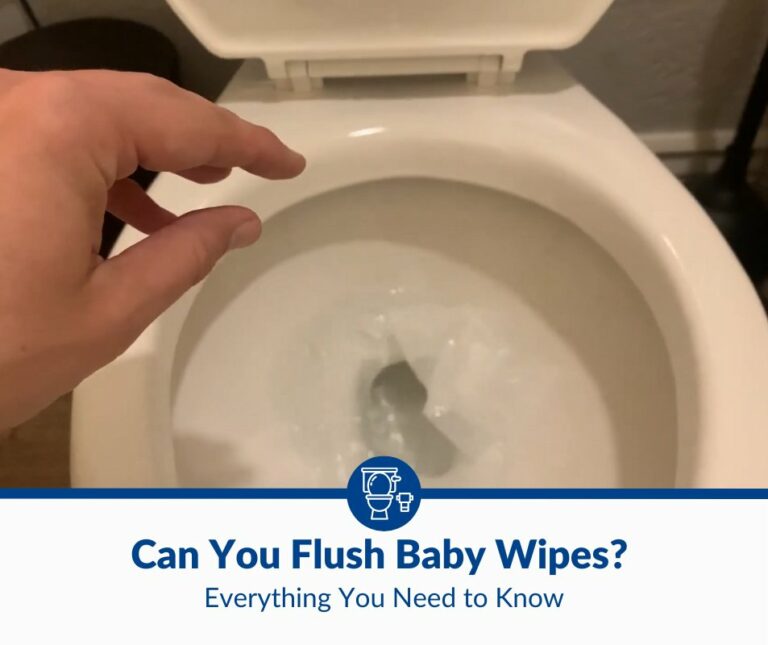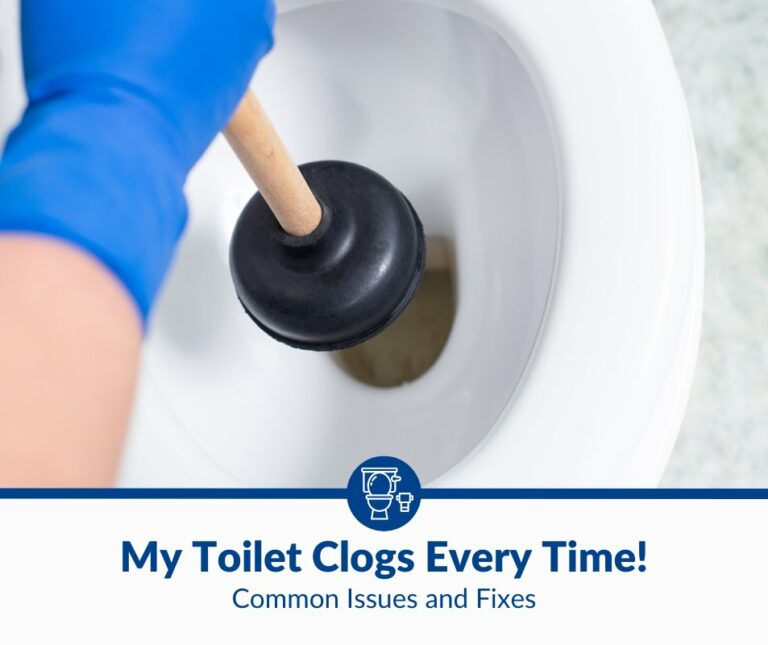Toilet Flapper Closes Too Fast: Common Issues and Fixes
A toilet flapper seals the toilet tank, preventing more water from entering the toilet bowl. When you flush the toilet, the flapper lifts, allowing the bowl to refill, and seals the gap when the bowl is full. Without it, the bowl may not fill properly or continue to fill slowly over time.
If your toilet flapper closes too fast, it may be an issue with slack in the chain. You may also need to replace the flapper as it is rubber and can wear out over time. This may happen due to a clogged drainage hole.
Let’s get into more detail about why your toilet flapper may close too fast and how you can fix it.
Common Issues That Can Cause Your Toilet Flapper To Close Too Fast
There are a few different reasons why your toilet flapper may close too fast when filling the toilet bowl. So, let’s go over some common reasons this may happen.
Flapper Chain Length
One of the main reasons your toilet flapper closes too soon is the length of the chain. If the chain is too short, it can prevent the flapper from closing the drainage hole completely. Alternatively, too long of a chain can cause the flapper to close too early. Both issues can prevent the flapper from opening and closing properly.
Too Short
If the flapper chain is too short, it can prevent the flapper from fully closing. When this happens, you may notice after flushing that the toilet runs for an extended period, and the bowl may not fill completely with water. Sometimes, this is an issue with the flapper closing too fast, yet it may also happen because the chain is too short.
Usually, a short flapper chain is not due to wrongful installation. The chain can naturally twist and kink over time when you use the toilet. So, regularly checking the chain for kinks, twists, or breaks is a good idea, especially when you notice flushing issues.
Too Long
Another common toilet flapper issue is a chain that is too long. This can cause the flapper to lift improperly when you flush the toilet, preventing enough water from entering the bowl. This can happen naturally over time with use, or it can be an installation error. Whatever the reason, it can significantly affect how well your toilet works.
If your chain is too long, this is something you can fix. However, it’s possible that attempting to fix the chain caused the issue in the first place. This may have happened if you or a plumber have recently worked on your toilet, as the chain is rather easy to manipulate.
Flapper Seat Not Sealing Properly
Another possible reason a flapper closes too soon is that it’s not sealing properly. These rubber pieces can bend and warp over time. If this happens, the flapper will not be able to seal properly. This can cause issues that present in different ways.
For one, you may notice that your toilet runs more than it should. This is a significant sign that there is something wrong with the flapper. You may also notice that the bowl is filling up only some of the way before the water stops. A bad flapper can cause many different problems with filling the toilet.
If the problem is the flapper seal, you may also notice a whining sound when the toilet stops filling up. This can be a sign that the flapper is not fully sealing. So, make sure you listen for any strange sounds when you flush the toilet and while it refills.
Debris Clogging the Flush Valve
Over time as you use your toilet, the flush valve may clog. The flush valve is the pipe that allows water to flow from the tank into the toilet bowl. If your toilet bowl fills only some of the way or not as fast as it should, it could be an issue with the flapper. However, a clogged flush valve can also impact how much and how quickly water enters the bowl.
A clog in the flush valve is not the same as a clog in the toilet. A toilet can clog when you try to flush too much at once, but the flush valve clogs when there is dirt and debris in the tank that enters the valve. This debris can come from your water supply or as materials in your toilet tank begin to wear out.
Over time as water passes through the toilet tank and into the flush valve, it can leave behind debris that can make its way into the tank. This is especially common with hard water. Hard water has a high percentage of minerals like calcium and magnesium. These minerals occur naturally in water, but too much of them can cause problems with your water.
An effective way to determine if you have hard water in your home is to run water over your hand for a few seconds. If your hand feels slimy rather than just wet, you probably have hard water.
If you have hard water in your home, you are more likely to find buildup. This means that you may find slimy material in your flush valve as residue from the hard water builds up over time.
This most likely won’t harm your toilet tank, but it can cause issues with your toilet running if you leave it to build up for a long time. You should occasionally check inside the toilet tank to ensure there is no debris buildup, and clean your toilet tank regularly if you have hard water.
How To Fix a Toilet Flapper Closing Too Fast
Thankfully, not every issue requires a visit from a plumber. Sometimes, you can fix these issues yourself and avoid the cost of hiring someone. So, let’s talk about some common fixes for a toilet flapper closing too fast.
Adjust the Flapper Chain
Whether the flapper chain is too short or too long, you can easily fix this yourself without paying a plumber. If the chain is too long, you will need to shorten it. Fortunately, this is a simple process. Flapper chains have an interlocking form that allows you to shorten the chain easily by prying them apart and closing them as necessary.
Ideally, the chain should only have about an inch (25.4 mm) of slack. When you tighten the chain, this is important to keep in mind, as you can easily make it too tight or too loose if you aren’t careful.
Shortening a chain that is too long requires you to pry open a link on the chain and close it again on a different part of the chain, making it smaller. You should also remove the extra chain that may be left to avoid any tangling later on.
Alternatively, you may need to lengthen the chain, which may not be as easy. Typically, the flapper chain will come with additional links that allow you to adjust the size as needed.
Similar to making the chain longer, loosen a link and then connect it to a different link to make the chain larger. You can also lengthen the chain by fixing kinks that may form over time. So, take your time and ensure you get the most length available in the chain.
Finally, if you cannot adjust the chain to the correct length, you may need to get a new one. This is a last resort, but it won’t set you back a lot of money. Toilet flapper chains are very inexpensive and easy to install.
If you need a new chain, consider the Mudder Toilet Flapper Chain (available on Amazon.com). It gives you six high-quality chains to replace yours. The chains are easy to install and work with most toilet flappers.
Replace the Flapper Seal
If the flapper has begun tearing or warping, you should replace it. A warped, torn, or broken flapper can cause issues with the seal working properly. It can also cost you money over time as your toilet will use more water than it needs to. So, replacing the flapper is beneficial for many reasons.
Before replacing the flapper, you must know what size to get. Flappers traditionally come in two-inch (50.8 mm) and three-inch (76.2 mm) options. Before you get a new one, measure the old flapper to ensure you get the right size.
If you’re looking for a replacement flapper, we recommend the Hibbent Flapper Replacement, (available on Amazon.com). This is a two-pack, so it’s great for those with multiple toilets in their home or those who want to keep a replacement in case they need another one.
Once you have your replacement flapper ready, the replacement process is easy:
- Turn off the water to your toilet via the shut-off valve. You can find this against the wall behind or sometimes beside your toilet. Turn it until the water is shut off and won’t enter the tank.
- Drain the toilet tank of water. This will allow you to access the flapper easily.
- Carefully remove the flapper if it’s still attached to the chain. It’s a good idea to preserve the chain in case your new flapper does not include one or anything happens to your new chain.
- Disconnect the old flapper from the chain by removing the hook. You can typically find the hook at the top of the flapper or sometimes along the side.
- Hook the new flapper to the chain. When you do this, you may need to adjust the chain length. Ensure the chain only has about an inch (25.4 mm) of give for the best results.
Clean the Flush Valve
If your flush valve has residue buildup or debris, you must clean it to help the toilet run more efficiently and fill the bowl better. The best way to test if this is the problem is to shut off the water to the toilet, empty the toilet tank, and feel the inside of the flush valve. When you run your hand through the valve, it should be smooth.
You will need to clean the valve if you feel any buildup or debris inside of it. This can happen over time as you use the toilet. So, it doesn’t necessarily mean that there are deeper issues with the toilet.
The best and most effective way to clean the flush valve is to use a small sponge. With the toilet tank empty and the flapper removed, use the sponge to scrub the inside of the flush valve. Once you scrub it as much as possible, run some water through it to help clear out any remaining debris you loosened with the sponge.
Common Misconceptions About Toilet Flappers
You may have some misconceptions about the flapper or even a misunderstanding of its importance for your toilet. So, let’s debunk some of those misconceptions.
Replacing the Flapper
You do not need to replace a flapper very often. Generally, plumbers recommend replacing the flapper about every 3-5 years, but that is a generalization. The truth is that your flapper can last longer than that, depending on its quality and use. So, a toilet flapper is not something you need to focus on regularly replacing unless there are signs it has worn out.
Flapper Fully Opening
One common misconception about toilet flappers is that they are fully open when you flush a toilet. While they do open, allowing water to pass into the bowl, the chain pulls the flapper upward. The flapper connects to a chain, but it also connects to the flush lever. The water pressure in the toilet tank holds the flapper down until the chain pulls it upward.
While the chain does pull the flapper up, it does not completely raise it from the bottom of the tank. Instead, the chain pulls the flapper up vertically, allowing it back down when the water level drops again after the bowl is full. So, the flapper opens on an angle, but it does not fully open even when you flush.
Size and Shape
A flapper will vary in size and shape based on the model and age of your toilet. You can choose between a two-inch (50.8 mm) and a three-inch (76.2 mm) toilet flapper, but the shape of the flapper also changes with the size.
If you have a two-inch (50.8 mm) flapper, it will look more like a baseball. Meanwhile, the three-inch (76.2 mm) option will be larger and thicker, making it look more like a softball. These size and shape variations may seem subtle, but they can make a big difference when looking for a flapper for your toilet.
When To Call a Plumber
While there are quite a few issues you can fix yourself, some also require a professional to handle.
Damaged Flapper or Flush Valve
While a flapper can wear out and even warp over time, significant damage to the flapper is often indicative of a bigger plumbing problem.
Thankfully, flappers can last for years before you even need to think about replacing them because they withstand water damage very well. So, if you see any more damage than slight warping, you should contact a plumber to look for bigger issues with your toilet.
You should also contact a plumber if there is damage to the flush valve. This is not common with toilets and often indicates something more serious going wrong. If you notice any breakage, leaks, or other major concerns, contact a plumber to look at it for you.
Trouble Fixing the Toilet Flapper
While we have some helpful tips and tricks for fixing your own toilet flapper issues, we understand there are limits to what you can do. If you’ve tried multiple times to fix the problem and are still experiencing it, it’s best to contact a plumber to take over. You may be facing a problem that you can’t fix, and you may damage it by repeatedly trying to fix it.
Also, don’t feel bad if these solutions sound too complicated. Trying to fix something without understanding what you’re actually doing can further damage your toilet or even cause you harm. So, only try our fixes if you feel comfortable with our solutions. Otherwise, it may be best for your toilet and your safety to contact a plumber to get the job done.
Final Thoughts
If your toilet flapper is closing too fast, you’re probably dealing with a chain length issue, debris in the valve, or the flapper not sealing. You can usually fix these common issues by adjusting or replacing the chain, replacing the flapper, or cleaning out the flush valve.
It’s very important to regularly maintain and fix toilet flappers to keep your toilet working as it should. Not only does a good flapper prevent issues with filling the bowl, but it also prevents the toilet from using too much water and raising your water bill. So, always check the flapper if you notice any issues with how your toilet runs.

